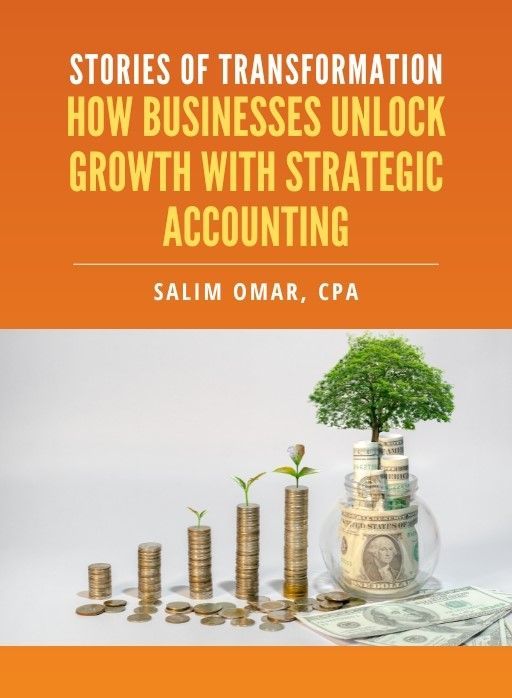Tax Strategies for Married Entrepreneurs Filing Jointly

When both spouses are in business, filing taxes jointly isn’t just a checkbox—it’s a planning opportunity that can open doors to smart savings and better financial control. Married entrepreneurs who work together (or run their own separate businesses) often miss out on unique tax strategies simply because they’re too caught up in day-to-day operations.
Let’s change that.
Whether you're both hustling in a shared venture or running individual businesses, understanding how to file taxes as a team can be a game-changer. This guide explores the top tax strategies for married entrepreneurs filing jointly—think income splitting, spousal retirement contributions, and how to maximize your brackets like a pro.
Why Filing Jointly Can Work in Your Favor
Before diving into strategy, let’s cover the basics. Most married couples benefit from filing a joint return due to:
- Lower tax brackets compared to separate filing
- Higher standard deductions
- Access to valuable credits and deductions
Joint filing combines income and expenses, letting you play with numbers to optimize tax savings. But the real magic happens when you take advantage of the nuances.
1. Income Splitting: Legally Spread the Load
If one spouse earns significantly more than the other, income splitting can help reduce overall tax liability. How?
Let’s say one partner earns $180K while the other brings in $30K. Filing jointly averages their total income across both brackets, possibly avoiding that higher marginal tax rate for the higher earner. This works especially well if the higher earner can shift some income—like through a reasonable salary or guaranteed payments—to the lower-earning spouse.
Real-World Example
Imagine a couple, both LLC owners. The higher earner adjusts the business structure to allocate profits evenly, and now both spouses fall into a mid-range tax bracket rather than one skyrocketing to the top. That difference? Could save thousands.
2. Double Up on Retirement Contributions
Retirement planning isn’t just a long-game—it’s also a brilliant tax strategy. Filing jointly allows both spouses to contribute to retirement accounts, including when one spouse earns little or no income.
Spousal IRA Contributions
Normally, to contribute to an IRA, you need earned income. But married couples filing jointly can leverage the spousal IRA rule, allowing the higher-earning spouse to contribute on behalf of the lower or non-earning one.
That’s up to $7,000 per spouse (if over 50) in 2025. Contributing to both accounts means reducing your taxable income while building future wealth for both partners.
SEP IRAs and Solo 401(k)s
If you both run businesses (even part-time), setting up individual SEP IRAs or Solo 401(k)s can supercharge your retirement savings. With Solo 401(k)s, each spouse can contribute both as employee and employer—up to $69,000 each in 2025 if over 50
3. Strategically Shift Deductions and Expenses
Another benefit of joint filing is combining deductions—but it’s not just about quantity. It’s about where and how you take them.
- If one spouse itemizes, both must itemize.
- If you’re self-employed, deductible business expenses can be used to offset income strategically.
- Health insurance premiums (if one spouse is self-employed) can be deducted—even if paid for both partners.
Case Study: Realigning Medical Deductions
A couple running two separate businesses realized their combined medical expenses hit the 7.5% of AGI threshold only when filing jointly. Separately, they wouldn’t have been eligible. That adjustment allowed them to write off thousands in out-of-pocket expenses that year.
4. Balance Estimated Tax Payments and Withholding
Married entrepreneurs often get hit with underpayment penalties because income is unpredictable. Filing jointly offers flexibility in balancing estimated taxes, W-2 withholdings (if one spouse is also employed), and business profits.
What helps:
- Use IRS Form 1040-ES to project joint tax liability early
- Coordinate withholding with the spouse on payroll to reduce quarterly burden
- Consider Safe Harbor rules to avoid penalties, especially if income fluctuates
Planning as a couple helps you avoid cash flow issues and IRS surprises—especially if one of you has a more volatile income stream.
5. Leverage Tax Bracket Opportunities
Here’s where it gets interesting: the joint filing tax brackets are wider. That means you can earn more without triggering a higher rate.
Let’s say your combined income is $190,000. As joint filers, you’re still in the 22% bracket. But filing separately? One spouse might tip into the 32% range. That’s a massive difference in taxes paid.
Pro tip: If one spouse has a big payday coming (say a business exit or large client project), shift income or expenses between years. Pull expenses forward, defer income—anything to stay in that sweet spot of your joint bracket.
6. Maximize the QBI Deduction
If either of you owns a pass-through entity (LLC, S-Corp, sole proprietorship), the Qualified Business Income (QBI) deduction could reduce up to 20% of business income—if income is under the threshold.
For 2025, that threshold for joint filers is $383,900. Filing jointly gives you more room to qualify.
Smart moves:
- Split income between spouses to stay below the QBI threshold
- Use retirement contributions and deductions to reduce taxable income and unlock the full 20%
Final Thoughts
Married entrepreneurs who coordinate tax planning can uncover strategies that solo filers can’t touch. Filing jointly isn’t just easier—it’s smarter when backed by a strategy.
By using income splitting, stacking retirement contributions, maximizing joint deductions, and watching income thresholds carefully, couples can legally and efficiently lower their overall tax liability.
Straight Talk CPAs helps married business owners uncover and implement the strategies that make the most sense for their unique situation. No fluff, just clear guidance to keep more of what you earn and set yourselves up for financial success—together.
Free eBook:
Stories of Transformation


Salim is a straight-talking CPA with 30+ years of entrepreneurial and accounting experience. His professional background includes experience as a former Chief Financial Officer and, for the last twenty-five years, as a serial 7-Figure entrepreneur.




